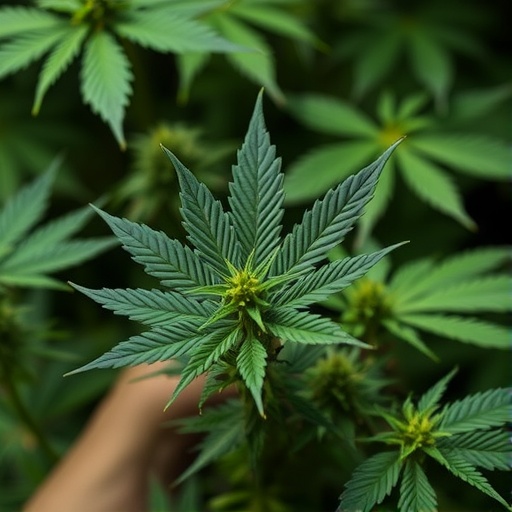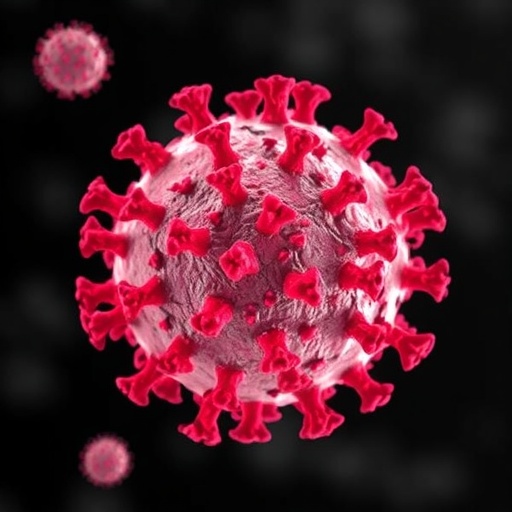
As cannabis use continues its unprecedented rise across the United States, propelled by expanding legalization and shifting societal attitudes, researchers are zeroing in on how this trend intersects with public health, particularly among vulnerable populations. New research conducted by experts at Texas A&M University School of Public Health and collaborators from multiple institutions sheds light on the patterns of recreational and medicinal cannabis consumption among non-Hispanic Black and Hispanic men living with chronic health conditions—demographics that historically experience disproportionate health burdens and face unique challenges in healthcare access and trust.
Chronic illnesses such as arthritis, cancer, depression, and anxiety disproportionately affect non-Hispanic Black and Hispanic men, often compounded by socioeconomic stressors, limited healthcare accessibility, cultural norms around masculinity, and longstanding systemic distrust of medical institutions. This accumulating health burden raises urgent questions about alternative symptom management strategies, including the increasing reliance on cannabis as a possible substitute or complement to traditional prescription medications.
In an effort to unpack the complexity of cannabis use within this intersectional group, the research team surveyed nearly two thousand men aged 40 and above, all of whom self-reported at least one chronic condition. These participants, representing a nationally representative sample, provided detailed accounts of their cannabis use over the preceding 30 days, specifying whether consumption was recreational or medicinal. In parallel, their health diagnoses, pain severity, mental health status, stress levels, and overall quality of life were meticulously documented.
.adsslot_2Pkhngas6p{width:728px !important;height:90px !important;}
@media(max-width:1199px){ .adsslot_2Pkhngas6p{width:468px !important;height:60px !important;}
}
@media(max-width:767px){ .adsslot_2Pkhngas6p{width:320px !important;height:50px !important;}
}
ADVERTISEMENT
The data reveal that cannabis use is notably prevalent among these populations, with approximately 21% indicating recent use, and usage rates higher among non-Hispanic Black men compared to their Hispanic counterparts. Nearly half of these cannabis users reported consuming it recreationally, often alongside the management of multiple chronic conditions. Importantly, the most common health ailments—chronic pain, depression or anxiety, arthritis, and cancer—underscore areas where cannabis is frequently invoked either to alleviate symptoms or as a form of self-medication in the face of limited alternatives.
Demographically, the researchers found that current cannabis users within this group tend to be younger, exhibit lower educational attainment, and have significantly lower household incomes compared to non-users. Moreover, these users report a markedly diminished quality of life, punctuated by increased days plagued with poor physical and mental health, heightened physical pain, and elevated stress levels. This suggests a bidirectional relationship wherein declining health may drive cannabis consumption, while cannabis use might, in turn, contribute to worsening health outcomes, a dynamic meriting longitudinal examination for causality and temporal patterns.
While cannabis is often perceived as a relatively benign solution for both physical and psychological ailments, intensive use carries the risk of adverse effects. Heavy consumption has been linked to cognitive impairments such as memory deficits, cardiovascular symptoms like tachycardia, respiratory complications, and the potential development of cannabis use disorder (CUD)—a condition characterized by problematic use, dependence, and difficulty quitting. For individuals already managing complex chronic conditions, these risks amplify concern, particularly since CUD can disrupt emotional well-being, financial stability, and physical health.
The study’s lead, Benjamin Montemayor, emphasizes the critical need for tailored interventions aimed at reducing harm in these communities. He underscores that cannabis use disorder not only complicates cessation efforts but may exacerbate the socioeconomic and emotional stresses prevalent in these populations. This highlights the importance of nuanced public health strategies that consider cultural, socioeconomic, and medical factors intrinsic to non-Hispanic Black and Hispanic men suffering chronic illnesses.
To address these challenges, the researchers advocate for comprehensive community-based interventions, including regulatory measures and targeted health education campaigns designed to raise awareness about the risks and benefits of cannabis use. They also call for standardized health warning labels on cannabis products, analogous to tobacco and alcohol, to better inform consumers of potential harms. Encouraging alternative symptom management approaches such as mindfulness and other non-pharmacologic methods is another cornerstone of their recommendations aimed at providing healthier coping mechanisms for pain and stress.
Crucially, the study highlights the necessity of fostering open, empathetic communication channels between patients and healthcare providers. Facilitating discussions centered around evidence-based information and non-prescription treatment options can empower patients to make informed decisions and minimize unsupervised cannabis use. This approach is especially vital given the existing barriers related to distrust and accessibility that often deter these men from engaging fully with healthcare systems.
The heterogeneity within cannabis users with chronic conditions calls for future research to disentangle the often complex interplay between cannabis consumption, symptom management, and health trajectories. Longitudinal studies are particularly needed to elucidate whether cannabis serves primarily as a palliative agent or, conversely, contributes to exacerbated health decline over time. Such insights will be instrumental in informing policy decisions amid the rapidly evolving legal landscape governing cannabis and cannabidiol (CBD) products across U.S. states.
As cannabis legalization continues to advance, policymakers and public health officials must grapple with balancing access and harm reduction. The evolving perceptions, usage patterns, and health outcomes associated with cannabis in racial and ethnic minority groups cannot be overlooked if equitable and effective health interventions are to be developed. The findings from this study provide a crucial empirical foundation to guide these efforts and signal the urgency of integrating culturally-aware, data-driven strategies into cannabis-related healthcare and regulatory frameworks.
This research was conducted by a multidisciplinary team at Texas A&M University, including faculty Ledric Sherman and Matthew Lee Smith, doctoral candidate Sunghyun Chung, undergraduate Arham Hassan, as well as collaborators Ashley Merianos from the University of Cincinnati, Caroline D. Bergeron from the Public Health Agency of Canada, and Wura Jacobs from Indiana University. Their collective expertise spans public health, behavioral science, and epidemiology, reflecting a comprehensive approach to investigating cannabis use within understudied populations.
Ultimately, as the societal narrative around cannabis undergoes rapid transformation, this study serves as a clarion call to deepen scientific inquiry into its nuanced health effects—particularly for communities already burdened by chronic diseases and systemic inequities. By doing so, the health implications of cannabis use can be addressed proactively through informed policy, culturally competent clinical care, and community engagement, thereby paving the way for safer, more effective management of chronic illnesses in diverse populations.
Subject of Research: People
Article Title: Correlates of Recreational and Medicinal Cannabis Use Among Non-Hispanic Black and Hispanic Men with Chronic Conditions
News Publication Date: 1-Jul-2025
Web References: http://dx.doi.org/10.1007/s10900-025-01500-7
References: Journal of Community Health
Keywords: Cannabis, Public health
Tags: alternative symptom management strategiescannabis use for chronic health issuescultural norms around masculinity and healthhealthcare access and cannabis useHispanic men and chronic health conditionsmedicinal cannabis benefits for chronic illnessesnon-Hispanic Black men and cannabispublic health and cannabis legalizationrecreational cannabis consumption among mensocioeconomic factors in cannabis consumptionsystemic distrust in medical institutionsTexas A&M University cannabis research





